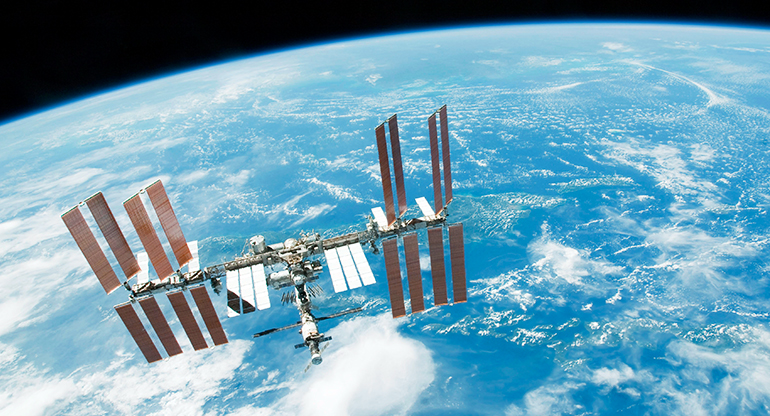 01-08-2019
01-08-2019
Engineering aids NASA's mission on International Space Station and beyond
Life in orbit depends on experts on the ground to ensure the safety of the mission, crew, and vehicle. Our engineers work alongside NASA personnel to help maintain the safety of crew members and systems onboard the International Space Station.
To mitigate risks to station and crew, we assist NASA Johnson Space Center's Safety and Mission Assurance Directorate in:
- Life support: We play an important advisory role to the engineers who monitor the crew's environmental and life support systems.
- Spacewalks: We are deeply involved in the safety planning and preparation of space walks, as well as the spacesuits themselves.
Our team has supported the space station for over 20 years. During its in-orbit construction, we worked with NASA to establish safety, reliability, and quality requirements for the hardware and software on which the space station relies to actively control hazards.
While averting risk is important, our team problem-solves with NASA when emergencies pop up.
“That is where our joint safety team really makes a difference for the International Space Station,” said Scott Simpson, who manages our NASA support. “With so many redundancies built in to manage hazards, the likelihood of something today causing the crew to abandon the space station has been greatly reduced."
Assess safety of space station systems
Space station crew members rely on systems that provide clean air and water and regulate the temperature in their environment. We support these life support systems in a couple of different ways.
- First, we evaluate operational plans and procedures for the system hardware to verify that they meet safety requirements. If they don't, we offer alternate solutions.
- Second, we advise NASA if a problem arises with these systems once they're in place on the space station.
For example, a complex piece of hardware called the carbon dioxide removal assembly absorbs CO2 exhaled from the crew. If NASA detects rising levels of CO2, which pose a danger to crew health and impact performance, our engineers pitch in on a solution.
Monitor spacewalks
More than 100 spacewalks have been supported by our team, most of them for constructing and maintaining the station. Also known as extravehicular activities (EVAs), spacewalks are planned well in advance, and our team is there every step of the way.
Before an astronaut performs a spacewalk, he or she must first protect themselves in a spacesuit. Our team provides expertise on the spacesuit itself and even the various hand tools crew members use during the spacewalk.
Astronauts face potential hazards during spacewalks, which may include radiation, decompression sickness, exposure to hazardous chemicals, rotating equipment, and even sharp edges. We assist in the spacewalk readiness review process to ensure all hazards have been identified, documented, and appropriately mitigated or acknowledged by senior staff.
For the six hours or so the astronaut is outside the station, we work with NASA to address any real-time hazards that might come up. If a problem arises with the suit – such as contamination, cut gloves, or water in the helmet -- we help NASA troubleshoot and resolve it.
Before crew members are sent to the space station, they train at NASA’s Neutral Buoyancy Lab and perform — while in a spacesuit, underwater — the common EVA tasks and specific procedures for planned spacewalks. As part of NASA's EVA Assessment Team, we help determine the safety and overall readiness of the astronauts, tools, and procedures to conduct the EVA.
“Our work requires a comprehensive understanding of the space environment and the limitations of the suit,” said Simpson.
Enable the future of space exploration
This year, NASA celebrates two anniversaries: the agency just turned 60, and the International Space Station is now 20 years old. And SAIC has been a part of that ride for a long time.
Now we're helping NASA as it develops the Orion spacecraft, an exploration vehicle that will carry crew members to explore deep space.
"The International Space Station is a stepping-stone for deep space," Simpson said. "We're learning techniques for the hazards and risks we face, and we're learning how to mitigate those in low-Earth orbit so we can go deeper into space."
Learn more about our space capabilities.




